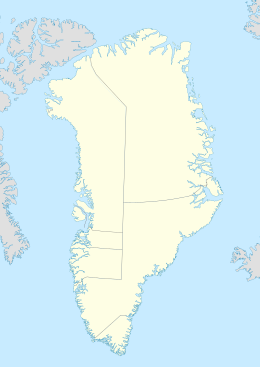Egger Island (original) (raw)
From Wikipedia, the free encyclopedia
Island in Greenland
"Itilleq Island" redirects here. For the settlement in the Qeqqata municipality, see Itilleq.
Egger Island
| Native name: Eggers Ø (Danish) Itilleq (Greenlandic) | |
|---|---|
 Landsat image with Egger Island's headland Cape Farewell in the centre. Landsat image with Egger Island's headland Cape Farewell in the centre. |
|
 Map of Egger Island Map of Egger Island |
|
  Egger IslandLocation of Egger Island in GreenlandShow map of the Southern tip of Greenland Egger IslandLocation of Egger Island in GreenlandShow map of the Southern tip of Greenland  Egger IslandEgger Island (Greenland)Show map of Greenland Egger IslandEgger Island (Greenland)Show map of Greenland |
|
| Geography | |
| Coordinates | 59°53′N 43°54′W / 59.89°N 43.90°W / 59.89; -43.90 |
| Archipelago | Cape Farewell Archipelago |
| Adjacent to | North Atlantic Ocean |
| Area | 307 km2 (119 sq mi) |
| Area rank | 24th largest in Greenland |
| Highest elevation | 1,251 m (4104 ft) |
| Highest point | Akunap Qinguata |
| Administration | |
| Greenland | |
| Municipality | Kujalleq |
| Demographics | |
| Population | 0 (2023) |
| Pop. density | 0/km2 (0/sq mi) |
| Ethnic groups | none |
Egger Island (Danish: Eggers Ø; Greenlandic: Itilleq, old spelling: Itivdleq)[1] is Greenland's southernmost island. It is located in the Kujalleq municipality and is uninhabited.
Egger Island is an important landmark for a small islet off Cape Farewell, its southern headland, is the southernmost point of Greenland. It is part of the Cape Farewell Archipelago (Nunap Isua).[2]
The island has a deeply indented coastline and is separated from the neighbouring islands of the archipelago by narrow sounds. Qunnerit lies to the west, Sammisoq to the north and the smaller Avatdlerssuaq and Saningassoq to the east. Egger Island has an area of 308.8 km2 and a shoreline of 150.2 kilometres.[3]
Cape Farewell lies at the island's southernmost tip, with a height of over 2000 feet; it is noted for bad weather.[4]
- ^ "Itilleq". Mapcarta. Retrieved 10 April 2016.
- ^ "Cape Farewell Map - Greenland - Mapcarta". mapcarta.com. Retrieved 5 January 2017.
- ^ "UNEP | ITP". islands.unep.ch. Retrieved 5 January 2017.
- ^ John Paxton (30 December 2015). Statesman's Yearbook World Gazetteer. Palgrave Macmillan UK. p. 200. ISBN 978-1-349-01415-6.